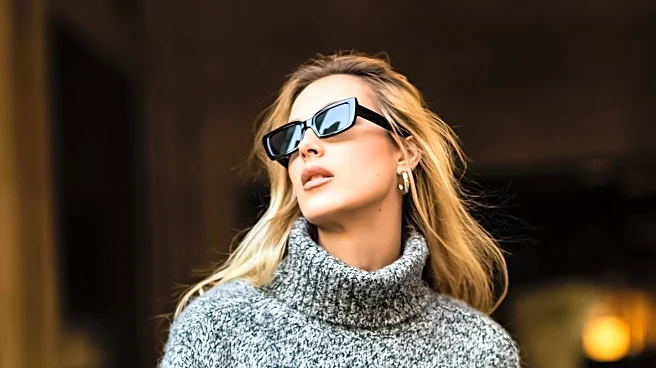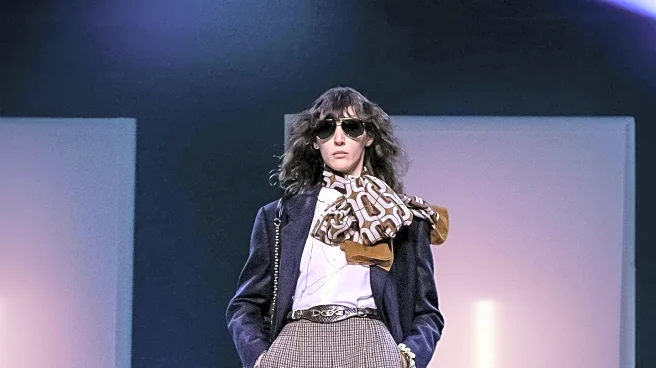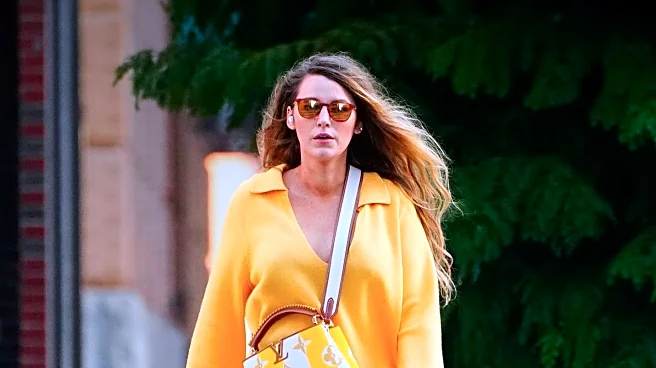What's Happening?
Ashley Olsen, CEO of The Row, was recently seen in New York City wearing an outfit that blends seasonal elements, despite the warm weather. Olsen's attire included a pale green, blue, and beige printed scarf layered over a long-sleeve black tee, paired with loose blue jeans. Her choice of footwear was summery, opting for black rubber Ama sandals from her own label. This outfit reflects Olsen's unique style of mixing seasonal clothing, a trend she has followed previously, such as during a dinner at BondST in NoHo where she wore an ankle-length coat with Row flip-flops. Her sister, Mary-Kate Olsen, also embraced the summer scarf trend at the US Open, wearing a black paisley pashmina with a white button-up shirt.
Why It's Important?
Ashley Olsen's fashion choices are influential in the celebrity style domain, often setting trends that resonate with the public and fashion industry. Her ability to mix seasonal elements in her outfits challenges conventional fashion norms and encourages creativity in personal style. This approach can inspire consumers to experiment with their wardrobes, potentially impacting retail sales as people seek similar versatile pieces. The Olsen sisters' fashion decisions also highlight the importance of personal expression in clothing, which can influence broader cultural trends in fashion.
What's Next?
As the seasons change, Ashley Olsen's style may continue to inspire fashion enthusiasts to adopt similar layering techniques. Retailers might capitalize on this trend by promoting versatile clothing items that can be worn across different seasons. Fashion designers could also explore new collections that emphasize seasonal blending, potentially leading to innovative designs that cater to this emerging trend. The public's response to Olsen's style choices could further shape upcoming fashion trends as autumn approaches.
Beyond the Headlines
Ashley Olsen's fashion choices reflect a broader cultural shift towards sustainability and versatility in clothing. By mixing seasonal elements, consumers can maximize their wardrobe's utility, reducing the need for constant purchasing and promoting sustainable fashion practices. This trend aligns with growing environmental consciousness in the fashion industry, encouraging brands to create durable, multi-seasonal pieces that appeal to eco-conscious consumers.










